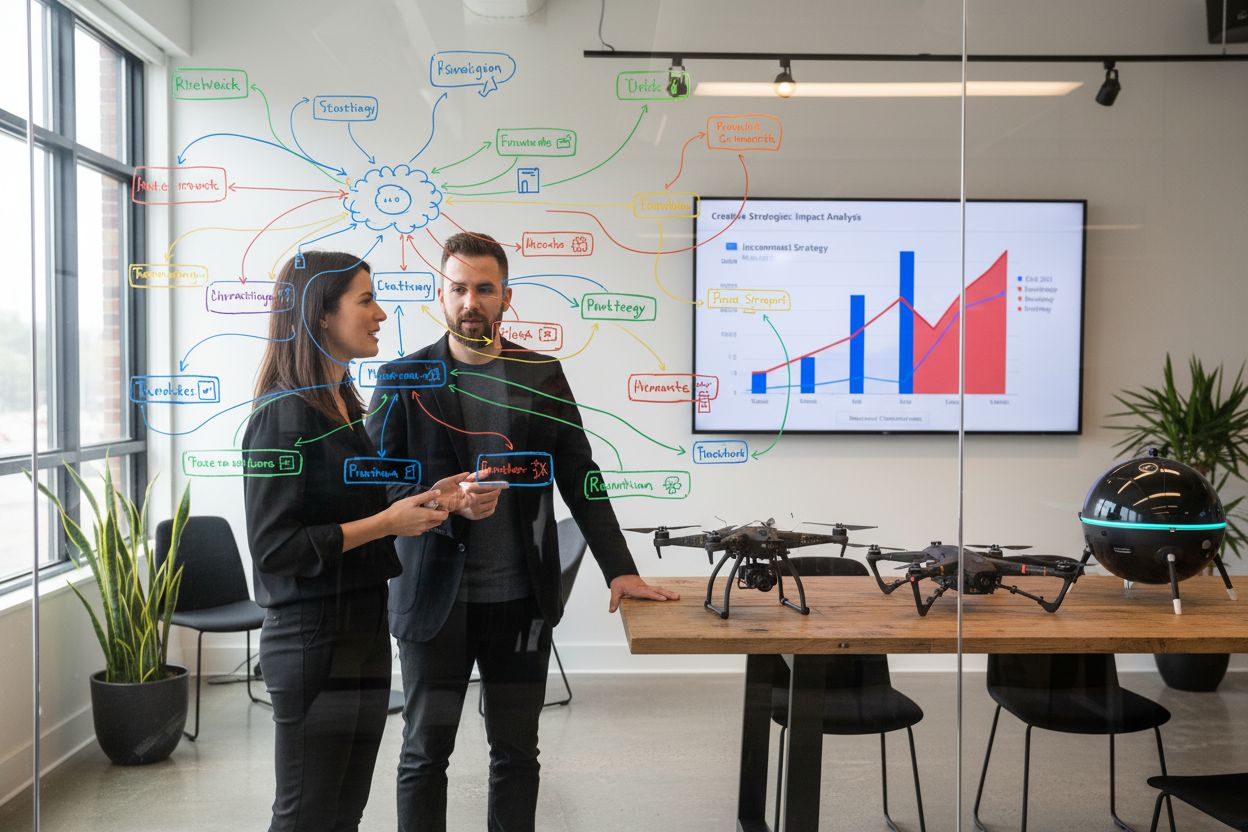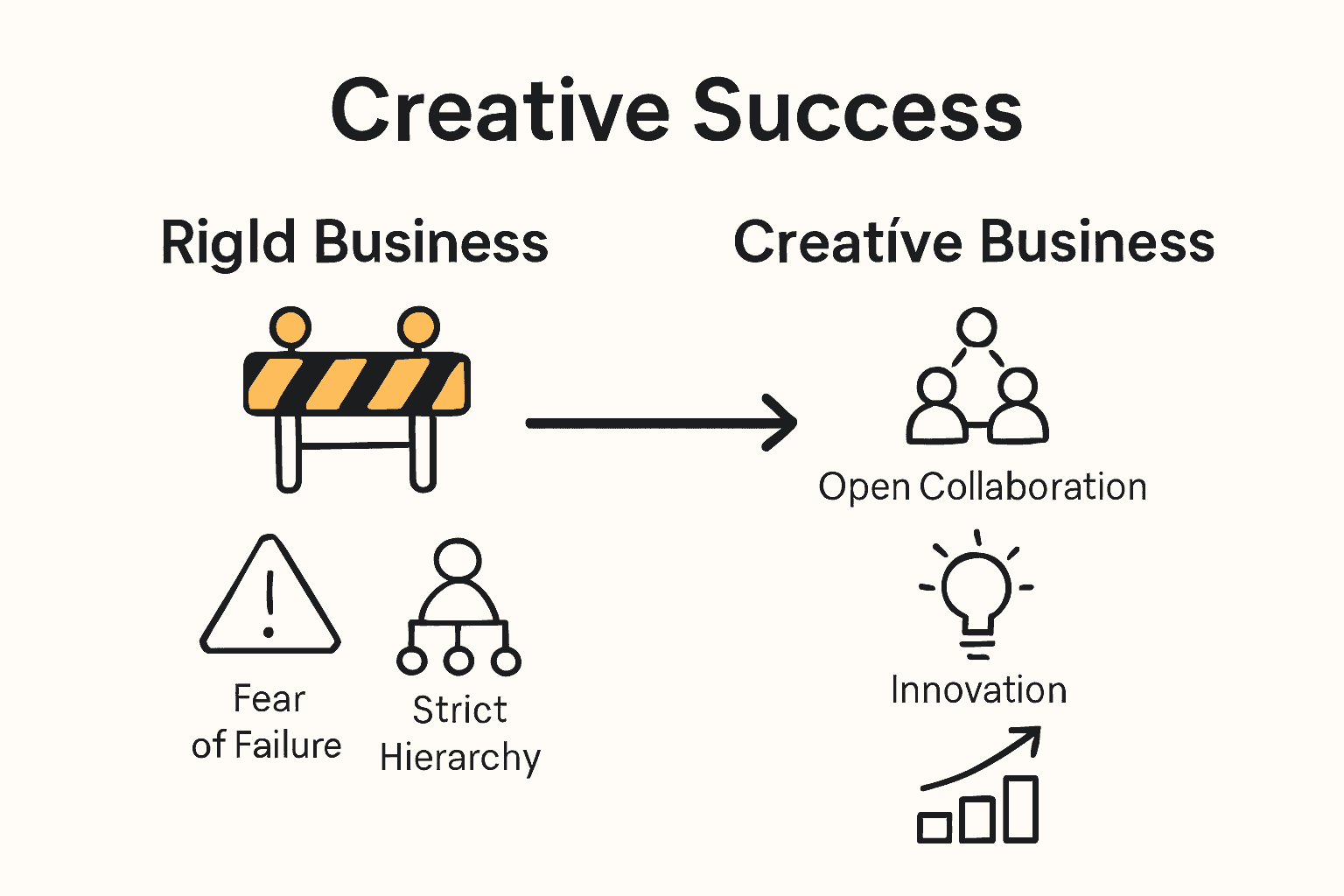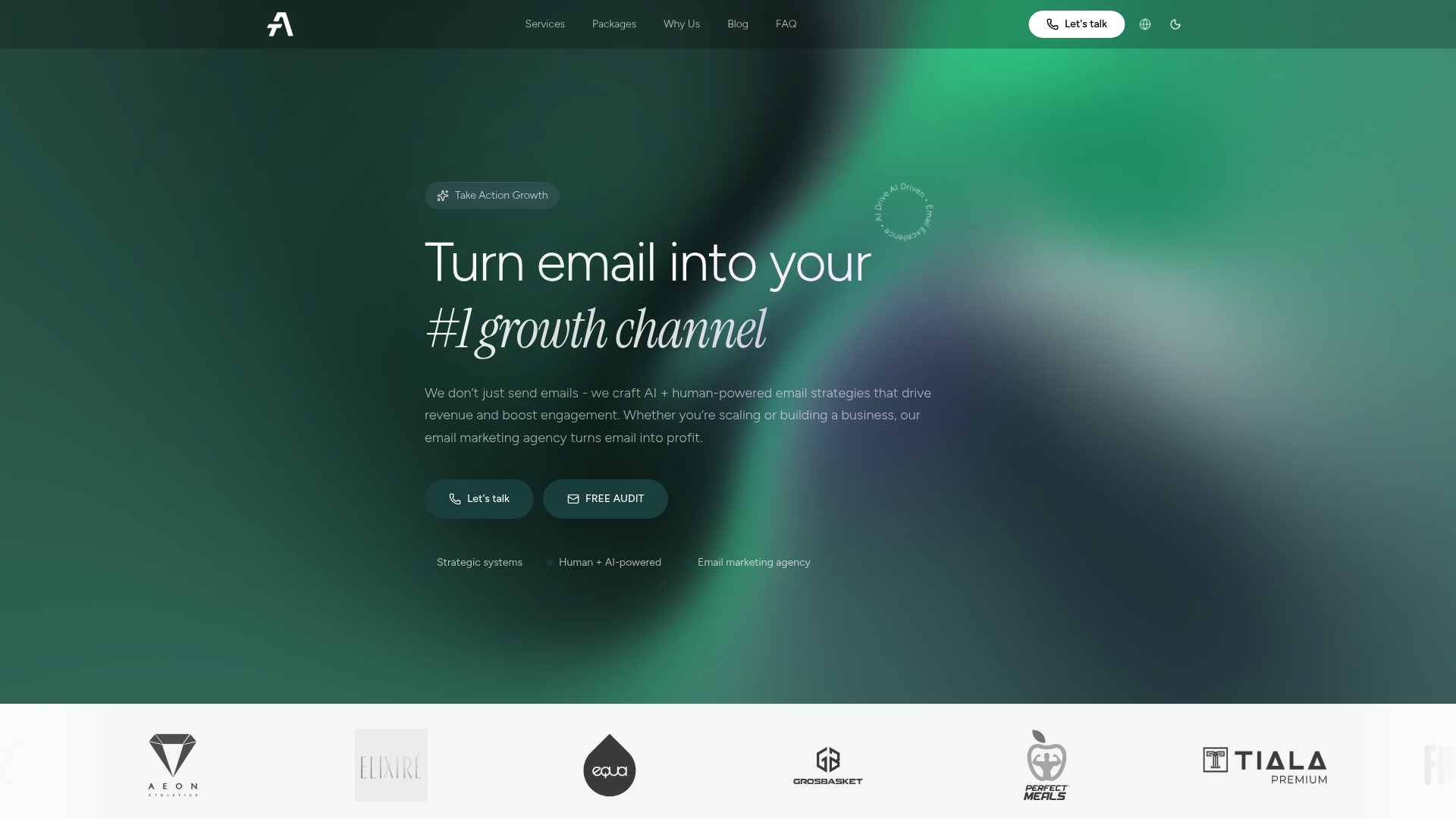Complete Guide to Creativity in Business
How can a business stand out when over 90 percent of executives believe creativity is the key to success? Creative thinking reshapes how teams solve problems and seize new opportunities, turning even tight constraints into clear advantages. By understanding how creativity works in business, organizations unlock practical ways to innovate, adapt quickly, and lead their industries with ideas that drive real impact.
Key Takeaways
| Point | Details |
|---|---|
| Business Creativity Definition | Business creativity is a strategic approach to problem-solving that combines originality and practicality to drive innovation. |
| Types of Creativity | Entrepreneurs can leverage various creativity types ranging from evolutionary to revolutionary, facilitating diverse innovation strategies. |
| Fostering Creative Environments | Successful organizations encourage collaborative innovation through structured brainstorming sessions and cross-functional engagement. |
| Addressing Creativity Barriers | Organizations must proactively mitigate risks related to fear of failure and rigid structures to enable effective creative processes. |
Table of Contents
- Defining Creativity In Business Contexts
- Key Variations Of Business Creativity
- How Creativity Drives Ecommerce Innovation
- Strategies For Fostering Creative Campaigns
- Risks, Barriers, And Mistakes To Avoid
Defining Creativity in Business Contexts
Business creativity isn’t just about generating wild ideas. Creativity represents a strategic approach to problem-solving that transforms challenges into opportunities. According to IdeaScale, creativity in business contexts means generating novel and valuable ideas that drive innovation and deliver competitive advantages.
At its core, business creativity requires two fundamental elements: originality and appropriateness. As highlighted by the Cambridge Handbook of Creativity Across Domains, creative business ideas must simultaneously be both unique and practical. This means innovative solutions must not only be groundbreaking but also feasible within existing constraints like:

- Time limitations
- Resource availability
- Market expectations
- Technological capabilities
Successful business creativity isn’t about random inspiration. It’s a deliberate process involving structured thinking, strategic exploration, and calculated risk-taking. Effective creative approaches help organizations:
- Solve complex problems
- Identify unexplored market opportunities
- Enhance customer experiences
- Drive sustainable growth
“Creativity in business is the ability to generate solutions that are both novel and implementable” - Cambridge Creativity Research
Ultimately, creativity transforms from a nebulous concept into a powerful strategic asset when businesses systematically cultivate environments that encourage innovative thinking and reward calculated experimentation.
Key Variations of Business Creativity
Creativity in business isn’t a monolithic concept but a dynamic spectrum with multiple fascinating dimensions. According to Startup Visa Research, entrepreneurs can leverage six distinct creativity types that range from incremental improvements to groundbreaking innovations.
Creativity Types in Business
The six primary entrepreneurial creativity variations include:
Here’s a summary of the six primary types of business creativity:
| Creativity Type | Description | Example Application |
|---|---|---|
| Evolutionary | Gradual improvements to existing processes or products | Product feature upgrades |
| Revolutionary | Radical, disruptive ideas that reshape the market | Launching a new technology |
| Combinatorial | Combining existing concepts for novel solutions | Hybrid business models |
| Imitative | Adapting proven ideas from other contexts | Copying retail loyalty programs |
| Incubative | Slow, reflective idea development | Long-term strategic pivots |
| Accidental | Unplanned discoveries or insights | Serendipitous product invention |
- Evolutionary Creativity: Gradual, systematic improvements to existing processes or products
- Revolutionary Creativity: Radical, transformative ideas that fundamentally disrupt current market paradigms
- Combinatorial Creativity: Merging existing concepts to generate novel solutions
- Imitative Creativity: Adapting successful strategies from other contexts or industries
- Incubative Creativity: Slow-burn ideas that develop through extended reflection and deep thinking
- Accidental Creativity: Unexpected insights emerging from unplanned circumstances
Cognitive and Emotional Dimensions
Beyond these types, creativity also manifests through different cognitive and emotional approaches. Business Yield Research highlights four distinct creativity variations based on brain activity and intentionality:
- Deliberate and cognitive creativity (structured, analytical problem-solving)
- Deliberate and emotional creativity (intentional, feeling-driven innovation)
- Spontaneous and cognitive creativity (sudden analytical insights)
- Spontaneous and emotional creativity (unexpected, intuition-based breakthroughs)
“Creativity is not a singular path but a multifaceted journey of exploration and innovation.”
Understanding these variations empowers businesses to cultivate diverse creative environments, recognize different innovation styles, and develop more flexible, adaptive strategies for growth and problem-solving.
How Creativity Drives Ecommerce Innovation
Innovation in ecommerce isn’t just about technology—it’s about reimagining how businesses connect with customers. IdeaScale Research emphasizes that creativity enables businesses to adapt quickly in rapidly changing markets, seizing emerging opportunities through novel customer experiences and inventive business processes.
Creative Adaptation Strategies
Successful ecommerce brands leverage creativity to transform challenges into competitive advantages. By studying disruptive innovators like Apple, Netflix, and Airbnb, we can understand how creative recombination drives breakthrough business models. Key creative adaptation strategies include:
- Reimagining existing product functionality
- Developing unique customer interaction models
- Creating unexpected value propositions
- Solving problems through unconventional approaches
Innovation Through Creative Thinking
Creative ecommerce innovation manifests in multiple dimensions:
- Product Design: Developing unique, user-centric solutions
- Customer Experience: Crafting personalized, engaging interactions
- Marketing Approaches: Designing memorable, shareable brand narratives
- Operational Efficiency: Streamlining processes through imaginative problem-solving
“Creativity is the secret weapon that transforms ordinary businesses into extraordinary market leaders.”
Our comprehensive ecommerce marketing strategies guide offers deeper insights into translating creative thinking into actionable business growth. By embracing creativity as a strategic tool, ecommerce brands can continuously evolve, surprise their customers, and stay ahead in an increasingly competitive digital marketplace.
Strategies for Fostering Creative Campaigns
Transforming marketing campaigns from mundane to extraordinary requires intentional creativity cultivation. According to WeShare Research, successful organizations implement strategic approaches that systematically encourage innovative thinking and breakthrough ideas.
Creating Collaborative Environments
Fostering creativity isn’t about individual genius—it’s about building environments where collaborative innovation can thrive. Key strategies include:
- Hosting structured brainstorming sessions
- Creating psychological safety for idea sharing
- Leveraging diverse team perspectives
- Encouraging cross-department collaboration
- Staying inspired by emerging industry trends
Practical Campaign Innovation Techniques
According to Breakthrough 3x Research, organizations can drive creative campaigns through:
- Professional development opportunities
- Technology and tool exploration
- Cross-functional team engagement
- Regular strategy evaluation and adaptation
- Systematic creativity rewards
“Creativity is not a solo performance, but an organizational symphony.”
Our newsletter content strategies guide provides additional insights into generating compelling campaign ideas. By implementing these strategies, businesses can transform their marketing approach from predictable to remarkable, consistently generating campaigns that capture attention and drive meaningful engagement.
Risks, Barriers, and Mistakes to Avoid
Business creativity isn’t a natural progression—it’s a deliberate practice fraught with potential pitfalls. According to Cambridge Advanced Research, organizations frequently encounter significant barriers that can stifle innovation and creative thinking.
Psychological and Organizational Barriers
Creative initiatives often face complex challenges that extend beyond simple technical limitations. The most prevalent risks include:
- Fear of failure: Preventing teams from exploring unconventional ideas
- Rigid hierarchical structures: Blocking open communication
- Limited psychological safety: Discouraging vulnerable, authentic sharing
- Resource constraints: Limiting experimental opportunities
- Efficiency-driven mindsets: Prioritizing predictability over innovation
Strategic Risk Mitigation
McKinsey Research reveals that leading innovators systematically address creativity barriers by:
- Incentivizing calculated risk-taking
- Making innovation a career advancement criterion
- Creating protected spaces for experimental thinking
- Normalizing idea failure as a learning opportunity
- Developing transparent evaluation processes
“The biggest risk in creativity is not taking any risk at all.”
Our email campaign best practices guide offers additional strategies for navigating innovation challenges. By understanding and proactively addressing these barriers, organizations can transform potential creative roadblocks into pathways for breakthrough thinking and sustainable growth.

Turn Creative Potential into Revenue with Smart Email Campaigns
Every business wants creative ideas, but real growth only happens when innovative thinking meets proven execution. The article covered how creativity in business thrives on originality, appropriateness, and smart adaptation. Yet, you might be struggling to transform your team’s innovative ideas into measurable results, especially when it comes to engaging customers and scaling your ecommerce brand. Many companies are held back by rigid processes, lack of automation, and fear of wasted resources. Now is the time to bridge the gap between creativity and actionable strategies that drive revenue.

Bring your creative marketing ideas to life with the email and retention experts at Take Action. Let us help you build high-converting, automated campaigns that align with your brand voice, boost customer retention, and maximize revenue using Klaviyo’s cutting-edge tools. Ready to make email your strongest growth channel? Explore our proven campaign strategies for ecommerce brands and discover how to get started. Take action now and unlock the full value of your creative vision—visit https://take-action.agency today.
Frequently Asked Questions
What is creativity in a business context?
Creativity in a business context refers to generating novel and valuable ideas that drive innovation and solve problems, transforming challenges into opportunities while remaining practical within existing constraints.
What are the key types of business creativity?
The six primary types of business creativity include evolutionary, revolutionary, combinatorial, imitative, incubative, and accidental creativity, each representing different approaches to innovative thinking and problem-solving.
How does creativity drive innovation in ecommerce?
Creativity drives innovation in ecommerce by enabling businesses to adapt quickly, develop unique customer interactions, and reimagine product functionalities, leading to enhanced customer experiences and competitive advantages.
What strategies can businesses implement to foster creativity?
Businesses can foster creativity by creating collaborative environments, hosting structured brainstorming sessions, encouraging cross-department collaboration, and providing professional development opportunities to continuously inspire innovative thinking.
Recommended
- 8 Time Management Strategies for E-Commerce Success | Take Action Blog | Take Action
- Understanding Creating Educational Content for Brands | Take Action Blog | Take Action
- Master Branding for Small Businesses: Build Loyalty in 2025 | Take Action Blog | Take Action
- Growing a Personal Brand: Boost Your Influence by 2025 | Take Action Blog | Take Action
- Understanding Blogging for Business: A Key to Growth
- 7 Content Curation Strategies Every Business Owner Needs – My Blog
